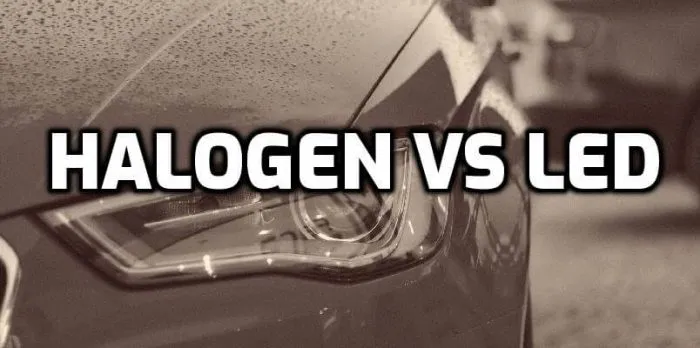Halogen vs LED Headlights
Is it time for you to upgrade your headlights? You may be wondering whether halogen or LED headlights are better. This blog post will explore the benefits of both and answer questions like: “What is a typical lifespan?” and “How much do they cost?” We’ll also look at the different types of LED headlight bulbs available on the market so that you can make an educated decision about which one is right for your car.
Some people might think that this information isn’t relevant to them because their car doesn’t even have headlights. But actually, all cars come with two low-beam lights in front (which use either halogen or LEDs), as well as high beams in addition to any other type of lighting your car may have.

In the end, it is up to you whether or not to upgrade your headlights. But if you do decide on halogen lights over LED ones, this article will help ensure that they are functioning properly and lasting as long as possible!
Comparison Table
Halogen headlights are widely used in cars all over the world. Almost 90% of the cars we see on the road are equipped with halogen headlights from the factory. On the contrary, LED is becoming famous in the headlight market for its long lifespan and efficient use of energy. In this section, we will know the difference between these two types of bulb through some point:
Halogen Headlights Short Review
- There are two types of halogen headlights
- They offer the most inexpensive option for lighting systems, particularly when used in low beams (which is what they’re primarily designed to be used with).
- There are many different types of halogen lights. These include H11, 9000 and HB50/HB55, all of which have different beam spreads and light outputs.
- Halogen lights have a lifespan of around 1000 hours, but some last longer than others.
- They also vary in price from a couple of bucks to a few hundred dollars depending on the quality you choose.
LED Headlights Short Review
- LED headlights to provide the best and brightest lighting.
- They offer a specific beam width to ensure that you get full coverage of your field of vision, while halogen lights only cover about 40% each (for low beams).
- LED bulbs cost more than halogens but can last up to 50,000 hours! The average lifespan of an LED bulb is around 25,000 hours.
- The color temperature of LEDs can range from very cool (blueish) to warm (yellow), which affects the appearance of your lights.
There are different types of LED headlights available on the market today: H11, 900/HB50/HB55, HB25W, HB38, and ECE. You’ll want to make sure you buy the right one for your car.
Key Difference
These are the key differences between halogen vs LED headlights, but there is more information you should know about both options before making a decision.
Filament: Halogen bulbs are also known as Tungsten bulbs for their tungsten filament with a small amount of halogen gas. Halogen gas redeposits the evaporated tungsten on the filament. This filament heats up with the passage of electricity. Thus, it emits light.
On the contrary, LED stands for ‘Light Emitting Diode,’ a series of transparent substrates of glass or gemstone material. This transparency makes the emitted light dispersed and uniform.
Luminous Efficiency: It is a parameter to indicate the energy efficiency of any source of light such as bulbs. It shows the bulb’s ability to emit light relative to the total power drawn. Halogen bulbs emit lesser light in respect to the total drawn energy. Thus, halogen bulbs have a low luminous efficiency of only 2-4%.
On the other hand, LED bulbs are more energy-efficient for their advanced structure. The luminous efficiency of LED bulbs is way higher than that of halogen bulbs which ranges between 10-45%.
Energy Loss: Halogen bulbs heat up too fast. So, it emits tremendous energy in the form of heat. Thus, loss of energy is significant in the halogen bulb. But LED bulbs are structured not to heat up mush. That’s why LED bulbs cause less energy loss by emitting heat.
Coverage and Brightness: LED bulbs provide more coverage and brighter light than halogen bulbs. Transparent substrates of glass in LED bulbs enable the emitting light to disperse. Moreover, it also becomes brighter when electricity is passed through the system.
Halogen Or Led, Which One Rules?
Halogen has many drawbacks then LED. LED bulbs are energy efficient. Light LED bulbs cover a wide area that gives better vision. Moreover, LED bulbs emit less heat.
But still, halogen bulbs are ruling one on the road. Halogen bulbs are easy to replace, cheaper than LED and function very simply. It’s available anywhere. But, the trend changes over time. People are gradually accepting LED bulbs for their long lifespan and flexibility.
Frequently Asked Questions (FAQ)
Halogen Light | LED Headlights |
| Check Price on Amazon | Check Price on Amazon |
Related Article


